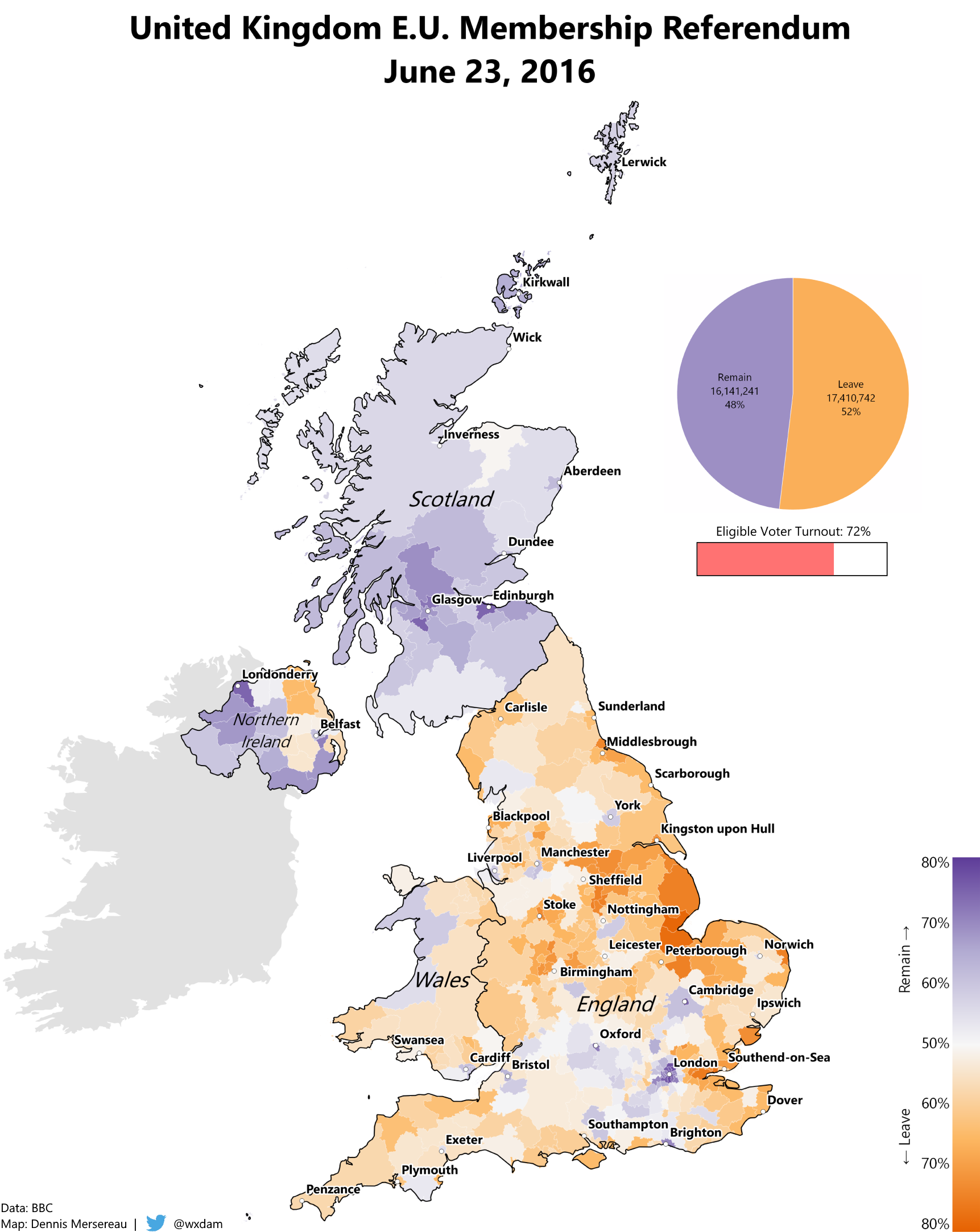|
| Local ◈ UTC |
2016 United Kingdom 'Brexit' Referendum
The United Kingdom—England, Wales, Scotland, Northern Ireland, and Gibraltar—voted on June 23, 2016, to leave the European Union 43 years after joining the continental confederation. After a long and often ugly campaign between the Remain and Leave camps, as well as polls that showed the two sides essentially deadlocked in the weeks leading up to the referendum, the Leave campaign scored a surprisingly decisive victory once all the votes were counted.
51.9% of those who turned out to vote in the referendum voted to leave the European Union, while 48.1% of voters elected to remain. Turnout of eligible voters for the referendum reached 72%, which is significantly higher than the 66% who turned out for the parliamentary election on May 7, 2015. (For reference, the 2020 presidential election in the United States saw a nationwide voter turnout of 63%, which was the highest turnout for a national election in over 50 years.)
As expected, the only strongholds for the Remain campaign were London and Scotland, where advocates for staying in the European Union won large victories. The victories there weren't large enough, however, and low turnout in these Remain strongholds allowed the widespread Leave support across England and Wales to end up more than a million votes ahead in the end.
The last time the United Kingdom held a referendum on whether to remain in or leave the European Union was in 1975, four years after the country first joined. The Remain campaign in that referendum scored an overwhelming victory, securing more than 67% of the vote.

|
|
I didn't stick to the weather. |